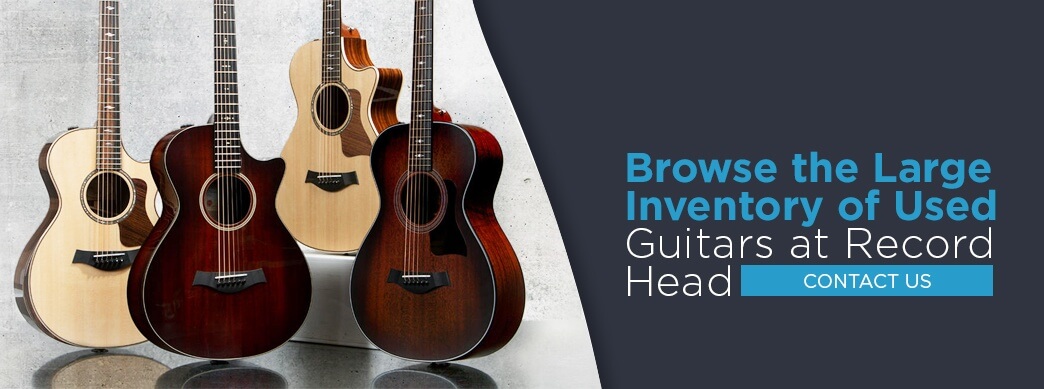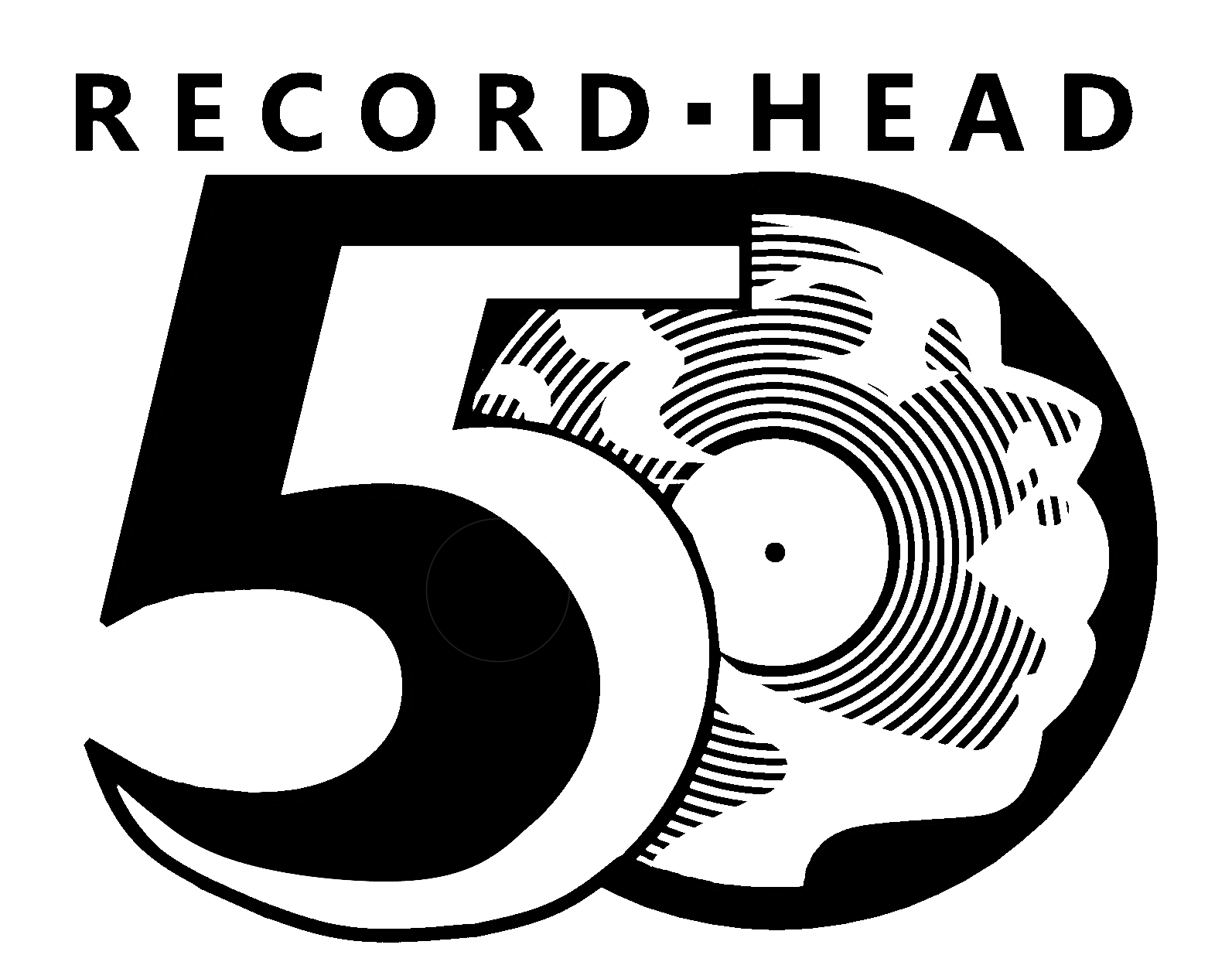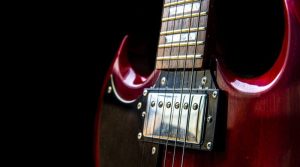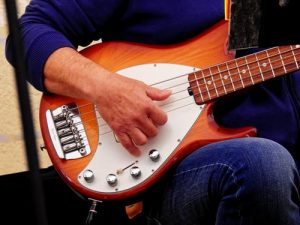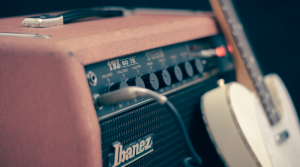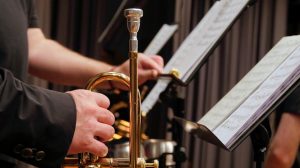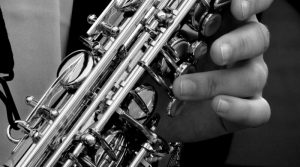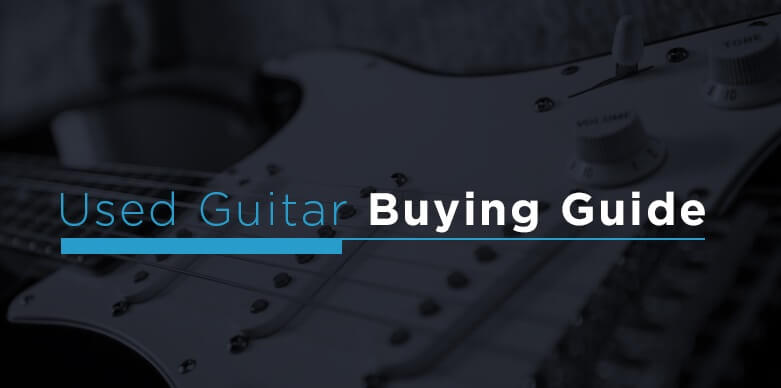 Whether you’re a seasoned musician or budding guitarist, you can find a used guitar that perfectly suits your needs and playing style. Used guitars are available in every make and model from standard beginner guitars to limited edition vintage instruments. Buying a secondhand guitar can be a great way to save money on a high-quality guitar or find a truly unique instrument.
Whether you’re a seasoned musician or budding guitarist, you can find a used guitar that perfectly suits your needs and playing style. Used guitars are available in every make and model from standard beginner guitars to limited edition vintage instruments. Buying a secondhand guitar can be a great way to save money on a high-quality guitar or find a truly unique instrument.
However, if you want to get a good deal on a quality instrument, you need to know what to look for when buying a used electric or acoustic guitar. In this used guitar buying guide, we will show you how to evaluate a guitar before buying it and offer additional tips for finding the perfect used guitar for you.
How to Get Started Buying a Used Guitar
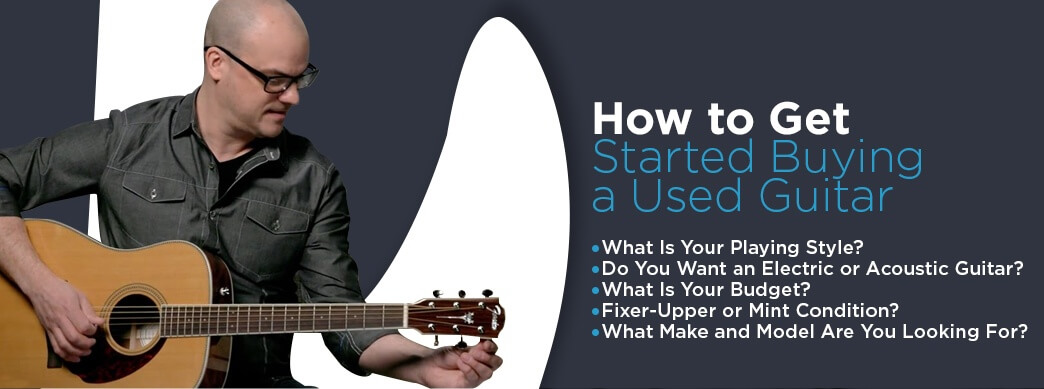
The part of buying a secondhand guitar is to have a general idea of what you’re looking for. Before you head to your local used guitar store in Milwaukee, ask yourself these five questions to help direct your hunt for the best secondhand guitar.
1. What Is Your Playing Style?
Begin by considering your playing habits. Are you a new guitar player, or have you been playing for years? Are you looking for a guitar that will withstand daily jam sessions, or do you only play every now and then? Will your guitar be taking the stage with your band, or do you typically just play songs for your friends? The answers to these questions will influence many other factors, such as the quality you’re looking for and how much you want to spend.
If you play your guitar often, look for a durable instrument that will withstand years of wear and tear. If you play infrequently or as a hobby, you may be satisfied with a more affordable model. If playing guitar is your passion, you may choose to splurge on a top guitar brand. If you plan to perform often, you may want an electric or acoustic-electric guitar that allows for amplification.
2. Do You Want an Electric or Acoustic Guitar?
If you already play guitar, you probably know whether you want to buy an acoustic or electric guitar, but if you’re a new guitar player, this may be a more difficult decision.
Think about the styles of music you want to play to help guide this choice — if you prefer rock or metal, you may lean towards electric, and if you prefer folk or jazz, you may want an acoustic guitar. If you tend to lean toward a lighter style but still dream of making it onto the stage one day, an acoustic-electric guitar can be a perfect choice. Since you play every guitar the same way, you can easily start with an acoustic and add an electric to your collection in the future.
3. What Is Your Budget?
When you buy used instead of new, you can save a lot of money on a good quality guitar. However, that does not mean all used guitars are affordable. Top models or rare vintage guitars can be valued at thousands of dollars, while basic used guitars may be available for under $100. If you’re looking for a reliable mid-range used guitar, plan to budget a few hundred to a thousand dollars, depending on your preferences and needs.
Buying a used guitar can also be a good investment. Just like classic cars, some guitars appreciate in value and can be resold for significantly higher than their purchase price. In some cases, repairing a used guitar can also boost its resale value.
Because used guitars are available to fit any budget, it’s smart to begin your search with a general idea of how much you want to spend. You may end up finding a guitar you love that is under your budget or finding your dream guitar that is worth spending a little more on.
4. Fixer-Upper or Mint Condition?
Buying a used guitar that needs some repairs is not necessarily bad, as long as you have a clear idea of the cost of the repairs. After thoroughly examining the guitar and talking with the seller, get a quote for any necessary repairs and factor them into the total cost of the instrument. Do some research to determine the fair market price of a similar guitar with similar repairs. Some repairs can devalue a guitar, while others may add value or have no effect on the price. If you only need simple repairs or a basic setup, you can still come out on top.
If buying a fixer-upper guitar makes you uncomfortable, plenty of used guitars are available that already play like-new. Most guitar stores will perform all necessary repairs and maintenance before putting a guitar on their shelves, so you can find a mint condition used guitar that is ready to play.
5. What Make and Model Are You Looking For?
The last question to ask yourself before heading to the store is what make and model of guitar you want. You may already have an idea of which brands you enjoy playing, or you may need to do some research about popular guitar brands in your price range. Read reviews to get a sense of how each make of guitar plays and which might suit your musical style.
When you’re testing out guitars, take note of which models are the most comfortable for you to play. Buying a used guitar is often a journey rather than a single shopping trip. Don’t be afraid to take notes on your first visit to the guitar store, then do some more research when you get home. When comparing top brands and lesser known models, remember that in the end, what matters most is finding an instrument you love to play that produces the sound you want.
How to Buy a Secondhand Guitar
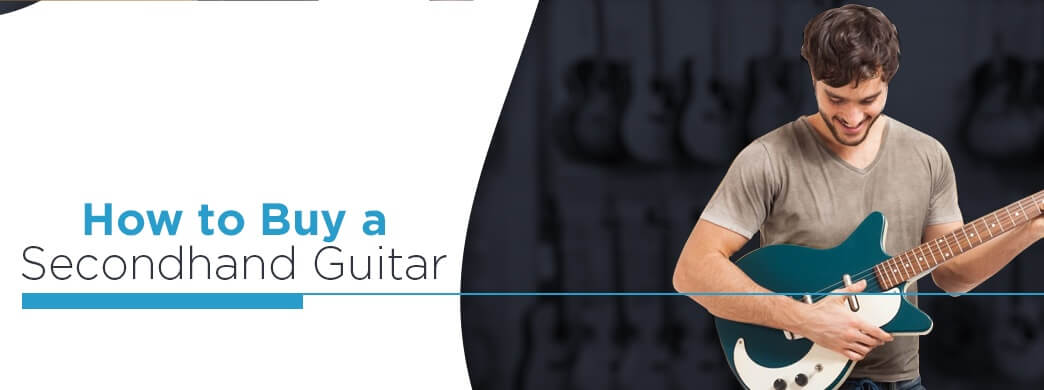
Once you have a good grasp of the kind of guitar you’re looking for, you’re ready to head to your local music store and start browsing. See what catches your eye, but keep your budget, dream guitar brand and desired sound in mind as you shop. Here are four steps to help guide you in your search for the best used guitar for you.
1. Ask About Age and Condition
When you find a guitar that interests you, ask the seller about the age and condition of the guitar. A reputable guitar store will be able to provide a basic history of the instrument, including how old it is and any repairs and maintenance that have been performed. They may also be able to identify future repairs you may need to make based on the current condition of the guitar.
When you buy a used guitar from a music store, you can trust that the guitar is in playable condition and priced fairly based on its quality. If you’re buying from a third-party source, such as Craigslist or eBay, you may want to be more cautious when evaluating the quality and condition of the instrument.
2. Assess the Guitar’s Condition
After getting the seller’s input on the guitar’s condition, the next step is to look over the instrument for yourself. Remember, it is totally normal for a used guitar to look like it’s been played and loved. As long as it’s evident that the guitar has been cared for rather than neglected, a few signs of wear and tear should not be a concern.
Assess the condition of the guitar by looking for any visible defects or signs of damage. If you’re a new guitar player, you may want to bring a more experienced friend who knows what to look for when buying a used guitar. Here are some tips on how to evaluate a guitar before buying it:
- Physical Appearance: Look for visible scratches or cracks on the surface of the guitar. Check the edges for any dings or chips in the body, neck or head. Small cracks may not be a problem, but any cracks that penetrate through the finish and into the wood will likely need to be repaired. Deep cracks can be a sign of structural damage inside the body of the guitar, which can be a costly repair.
- Surface Finish: You can sometimes polish away discoloration or stains on the surface of a guitar, but stains that penetrate the finish are more challenging to remove. Deep stains may require refinishing the guitar which can be expensive and may lower the instrument’s value. An electric guitar with a stock finish is often worth more even if the finish it is worn or faded.
- Structural Integrity: Check all of the edges and joints of the guitar to make sure they are securely sealed and that none of the seams are peeling. Make sure the neck fits tightly against the body and that none of the binding is pulling away.
- Neck: Carefully examine the neck of the guitar, as it plays an essential role in producing a quality sound and maintaining correct intonation. Begin by looking down the neck from the headstock to check for any bowing, twisting or warping. The neck should be almost perfectly straight, but a small amount of bowing is okay. If the neck bends excessively to the front or back, this could be a sign that the truss rod is broken or needs an adjustment. If the neck slopes up where it attaches to the body, this may indicate that the fretboard is warped. Fixing a warped fretboard may require a complete re-fret and can be very costly.
- Neck Angle and Action: The neck angle of a guitar has a big impact on the volume, tone and overall playability of the instrument. A guitar with a neck angle that is too low will have a high action even when the bridge saddles are adjusted as low as they can go. A guitar with an excessively high neck angle will have an action that is too low when the bridge saddles are adjusted as high as they can go. In either instance, the neck will need to be reset to restore the correct neck angle. If the neck is bolted on, this repair may be fairly affordable, but if the neck is glued on, resetting it can be very expensive.
- Bridge: Look for any space between the bridge and the top of the guitar to make sure it is not loose. You can also run a piece of paper along the seam to see if it slips underneath in any spots. If there are any gaps, the bridge may need to be re-glued. Make sure the bridge does not have any cracks and that the surface in front of and behind the bridge is fairly flat without any sinking or bulging. Replacing a cracked bridge can be expensive, and it may be difficult to find an exact replacement model depending on the model of guitar.
- Frets: Check each fret of the guitar for any divots or dents. Damaged frets can cause notes to sound muted or strings to rattle when playing. Replacing or repairing frets can also be expensive, so be sure to check every fret carefully.
- Headstock: Examine the joint where the headstock attaches to the neck of the guitar. Any ridges or wrinkles in this area may be a sign that the headstock was damaged and then repaired, which significantly lowers the value of the guitar.
- Hardware: Look for any rust or corrosion on the adjustment screws, nuts, washers and other hardware. Check that the plating is in good condition without rust or scratches. Rust on the strings should not be a concern as replacing guitar strings is fast and affordable.
If you notice any glaring problems when visually inspecting the guitar, you may want to put it back on the shelf. If you notice smaller problems, ask the seller or research how much these repairs would cost and if they would impact the value of the instrument. Smaller repairs may pay off in the end if you have found a high-quality used guitar.
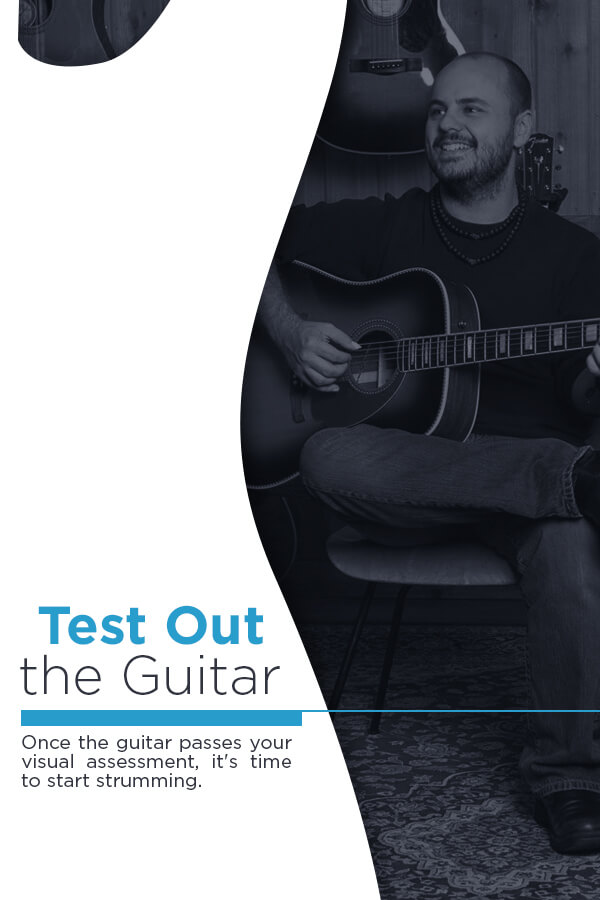 3. Test Out the Guitar
3. Test Out the Guitar
Once the guitar passes your visual assessment, it’s time to start strumming. If you’re just learning how to play guitar, you may want to recruit a more experienced player to help you test out the instrument, as you will want to play a full range of notes and test all of the guitar’s features. For an experienced player, bringing along a friend can allow you to hear how the guitar will sound from the audience, as well as how it feels in your hands.
When testing a used guitar, here are a few steps to take to thoroughly assess its sound quality and tone:
- Check the Intonation: When testing the intonation, you’re verifying that the instrument will stay in tune along the entire fretboard. Most electric guitars allow intonation to be corrected individually by adjusting the string length at the saddle, so poor intonation is not as big of a concern when shopping for a used electric guitar. For acoustic guitars, on the other hand, correcting bad intonation is more complicated and expensive, as the saddle cannot be adjusted individually. To check the intonation on a guitar, begin by tuning the guitar to concert pitch. Lightly touch the first string at the 12th fret and pluck it, then adjust the string until it is in tune. Next, press the string down at the 12th fret and pluck it again. If the pitch is not the same, then the guitar does not have good intonation and will likely need an adjustment.
- Play Each Fret: Play each fret from the top to bottom string and listen closely for rattling, muted tones or other unusual noises. Rattling may be a sign of a string with broken windings or could mean that a fret needs to be replaced or repaired. Verify the cause of any usual noises and check each fret, even ones you do not usually play.
- Bend the Strings and Play Around: When testing out a guitar, don’t be afraid to play it in all the funky ways you usually would — If you bend strings, bend them. If you fingerpick often, then fingerpick. Make sure the guitar can perform the way you want it to and sound good while doing it.
- Tune It and Adjust It: Make sure the truss rod allows for adjustment and all of the tuning keys work properly. Just as you would check every feature of a used car from the windshield wipers to the radio, you want to make sure every element of the guitar is in working order or can be repaired affordably.
- Plug It In: If you’re buying a used electric guitar, be sure to plug it in and check that all of the electronics work. Test the switches and listen for any scratchy or noisy pots as you adjust the volume and tone knobs. Test the output jack by gently jiggling the cable. If the sound produced is intermittent, noisy or scratchy, you may want to look into repairs before committing to the guitar.
- Make Sure It Feels Comfortable: The last question to ask is if the guitar feels good to play. Guitars come in a variety of sizes and shapes with different neck widths and depths. The perfect guitar will fit comfortably in your hands and arms while allowing you to reach each note without straining your fingers. Keep searching until you find a guitar that sounds great and feels good every time you play it.
4. Seal the Deal on Your Perfect Used Guitar
Once you find a guitar that passes your visual inspection, fits your budget, complements your style, sounds great and is enjoyable to play, it’s time to seal the deal. Used guitars can come and go quickly in guitar stores, so be sure to snag your dream guitar before it’s too late. If you don’t find the perfect fit on your first visit, check back in again to see what new models may be available. When you follow these steps for buying a used guitar, you’ll have a new-to-you guitar in your hands in no time.
Browse the Large Inventory of Used Guitars at Record Head
If you’re looking to buy a used guitar in Milwaukee, Record Head is your local hub for competitively priced and high-quality used guitars. The friendly staff at Record Head would be happy to help guide you on your search for the best used electric or acoustic guitar for you.
Visit our store in West Allis to shop our extensive inventory of used guitars and other instruments, or contact us to learn more about our secondhand guitars.